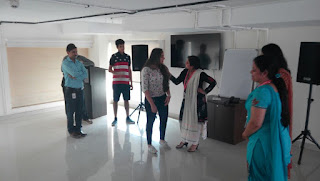| Logo of the Suno App on Google Play Store |
This has been a great week for Esha. First, we launched the volunteering page on the website.
Next, on June 12th, we held the first open 9Tanki workshop - where the participants were as young as 15 and some of them older than 40. For the first time, varied perspectives were present on the same stage and it enriched our view of how 9Tanki can change perspectives, and lives.
And now, we are so happy to share this : Yogesh is a bright engineer. On his own personal time, and out of his interest, he has created an app in partnership with CLABIL. All the free content of CLABIL in Hindi is now available on this Android app. It is simply called "Suno"(सुनो ) Suno literally means "Listen" in Hindi. Simple. And Powerful.
Some salient features of the app are:
- Content can be downloaded on the local phone.
- Chapter navigation is easily possible.
- The library will be remotely updated as and when we add books.
- Once downloaded, the book will not need to be downloaded again :)
We encourage you to try the app even if you are sighted (since all content is free) . And of course, spread the word to NGOs, govt schools and children who are not enrolled in formal schooling. We have a lot of stories for them to learn from..
The app is available here: https://play.google.com/store/apps/details?id=com.sunobooks.suno
OR, just go to the Play store and search for "Suno" - we got it easily enough.
















